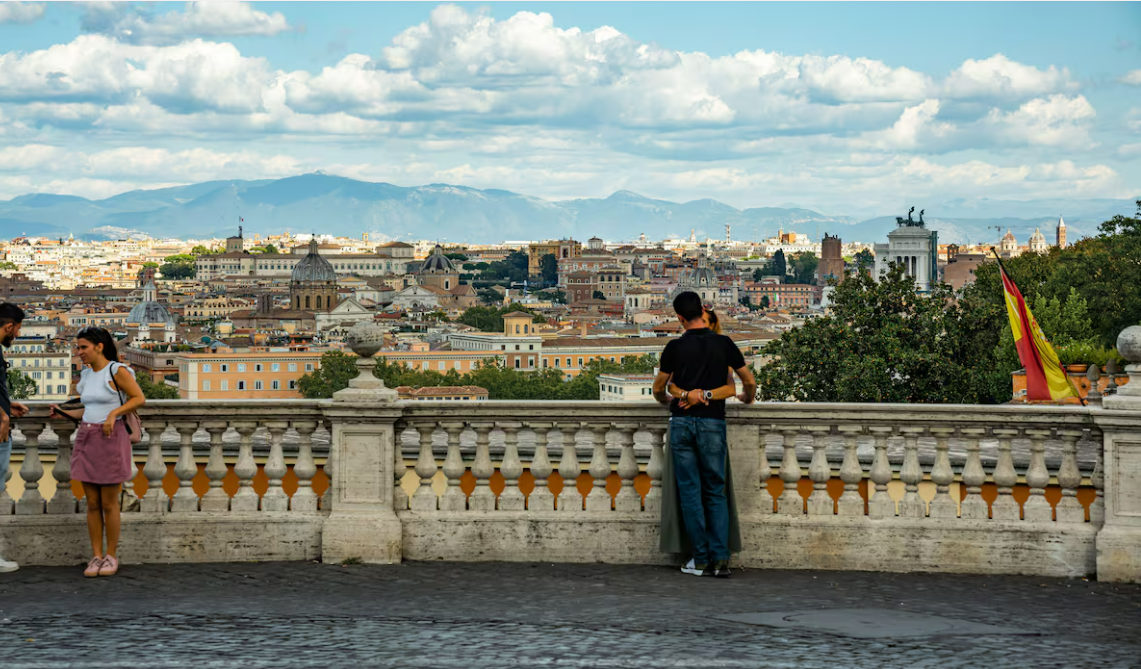Tucked between the Gianicolo hill and Trastevere, Monteverde is a charming and largely overlooked district of Rome that blends verdant parks, elegant streets, and rich cultural history. Divided into Monteverde Vecchio (Old Monteverde) and Monteverde Nuovo (New Monteverde), the neighborhood offers a quieter, more residential perspective of the Eternal City, away from its crowded tourist hubs.
One of Monteverde’s greatest attractions is Villa Doria Pamphilj, the largest public park in Rome. Spanning 184 hectares, the park features wooded paths, centuries-old oaks, and manicured pines reminiscent of Giacometti sculptures. Visitors can explore the Casino del Bel Respiro, a historic palace once home to the Pamphili family—including Pope Innocent X—now used to host visiting heads of state. Within the park lies the Villino Corsini, which houses a public library, as well as scenic lakes populated by geese and swans.
Another green gem is Villa Sciarra, a seven-hectare park enclosed by the 17th-century Gianicolo walls. Its fountains, statues, and mature trees create a serene atmosphere, perfect for quiet walks. The park’s elevated viewpoints, including terraces at the Belvedere del Gianicolo, provide panoramic views of Rome’s skyline, including glimpses of the Spanish Academy in Rome.
Monteverde is also steeped in cinematic and literary history. The neighborhood inspired the poet and filmmaker Pier Paolo Pasolini, who lived here in the 1950s and early 1960s. Pasolini resided first on Via Fonteiana and later on Via Giacinto Carini, where he met and befriended the family of director Bernardo Bertolucci. Monteverde’s streets and daily life deeply influenced Pasolini’s early work, including his first novel, Ragazzi di Vita (1955), and his debut film, Accattone (1961). Today, visitors can see a commemorative plaque in his honor on Via Abate Ugone, near Via Donna Olimpia, and explore sites linked to his life and legacy.
Wandering through Monteverde offers a mix of architectural styles and culinary delights. The Via Alessandro Poerio area showcases Liberty-style villas with unique colors and designs, while local markets like Piazza San Giovanni di Dio provide an authentic taste of Roman life, from seasonal vegetables to specialty greens like puntarelle. For food lovers, La Gatta Mangiona is a must-visit, renowned for its wood-fired pizzas—try the classic Margherita with buffalo mozzarella or the gourmet Marzolina with caciocavallo cheese, artichokes, and pancetta.
Monteverde’s charm lies not in ancient temples or iconic ruins but in its art of living. Streets are lined with small shops, kosher bakeries, and local businesses that reflect the neighborhood’s vibrant, everyday culture. Art and history enthusiasts can also visit studios like that of painter and poet Silvio Parrello, who has preserved the memory of Pasolini through photographs, exhibitions, and personal anecdotes.
A walk through Monteverde is an immersive experience: leafy streets, quiet piazzas, and historic villas punctuated by stories of Rome’s artistic heritage. Whether strolling through its parks, admiring its architecture, or savoring its culinary offerings, visitors gain insight into a side of Rome that is both residential and culturally rich, where history and modern life coexist harmoniously.
Tips for Visiting Monteverde:
- Explore Villa Doria Pamphilj and Villa Sciarra early in the morning to enjoy their tranquility.
- Walk the streets of Monteverde Vecchio to glimpse Pasolini’s old residences and local architectural gems.
- Sample local markets and restaurants for authentic Roman flavors, including specialties like puntarelle and gourmet pizzas.
- Don’t miss terraces like the Belvedere del Gianicolo for stunning city views.
- Take time to appreciate the quiet charm of Monteverde, a district where art, history, and everyday life intertwine seamlessly.
Monteverde may not feature Rome’s iconic monuments, but its gardens, streets, and cultural history offer a unique, immersive experience—perfect for travelers seeking the authentic soul of the city.

